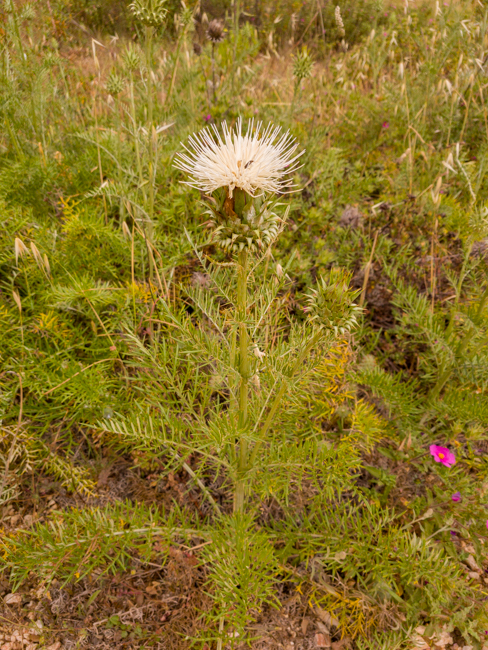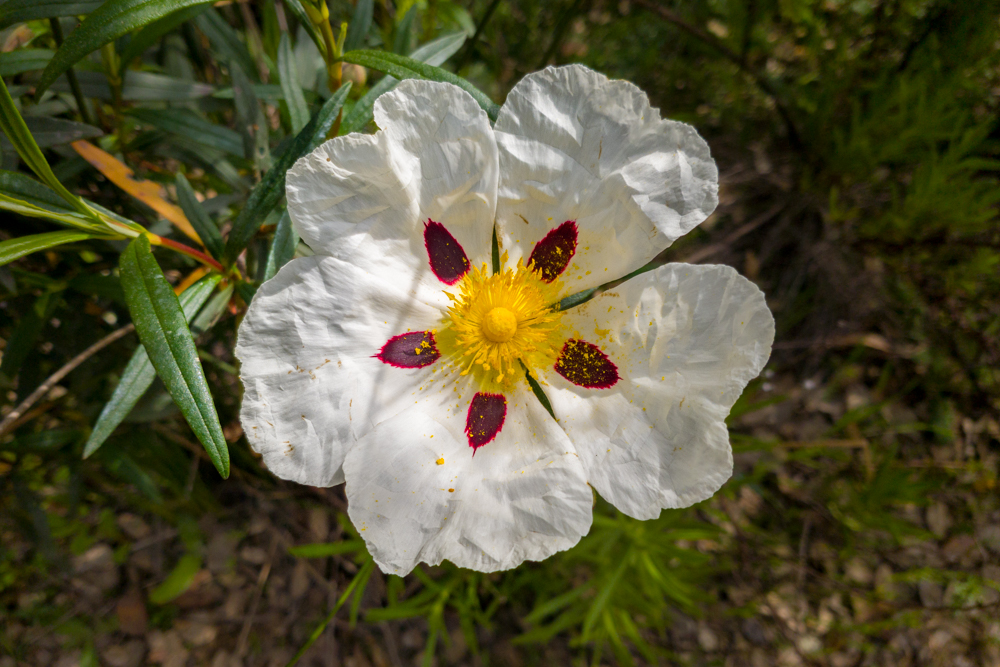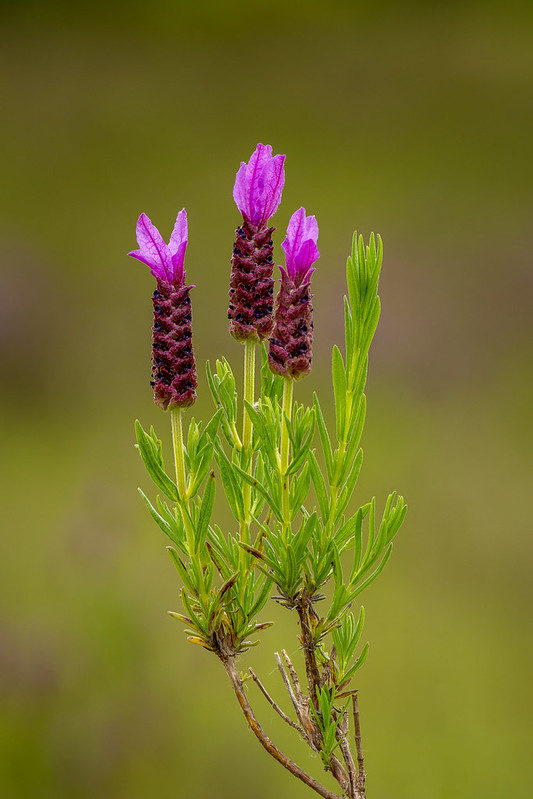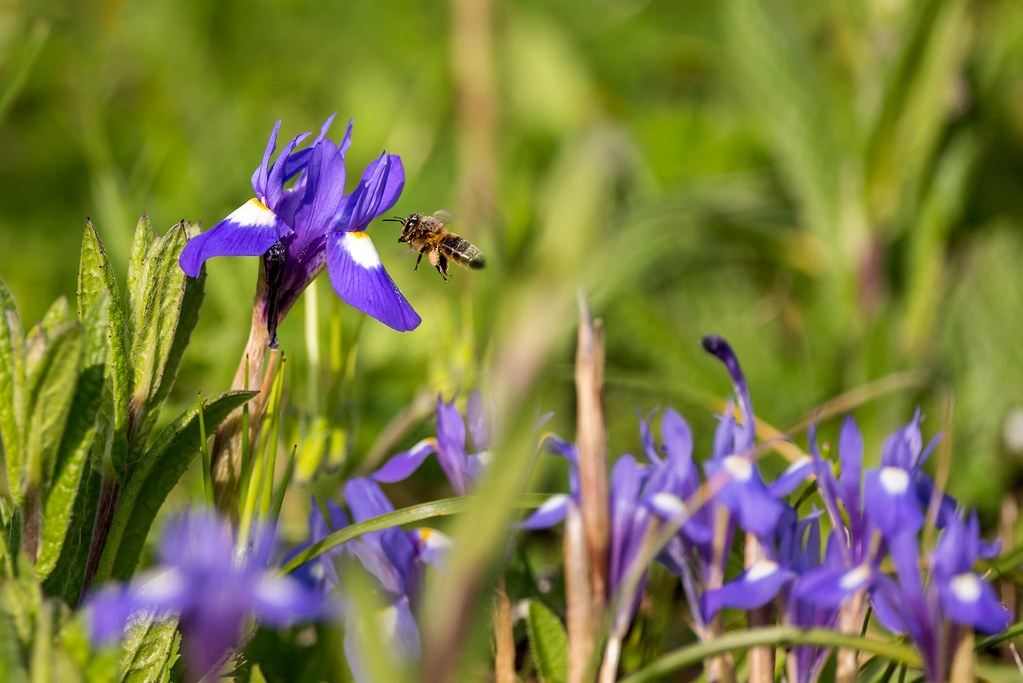You may remember the photos of the Honey Bees on a Thistle from a few days ago. I couldn’t understand why the Thistles had flowered White and not Purple.
At the time, I ID’d them as Illyrian Scotch Thistles, however, I was wrong.
I was talking to my (Portuguese) Neighbouring Farmer and he insisted that they always flower white. I asked him what the Portuguese name is and he replied “Cardo”. This is Portuguese for Thistle, so I didn’t get anywhere. However, I was searching for references to Cardo and stumbled across the Cardoon Thistle (also known as the Artichoke Thistle).
This is what these are, however, most of the references also mention that the flowers are purple, so back to square one, why are they white.
I have found a few photos on the internet that show white flowers, one reference I saw mentioned the “Rare White Cardoon Thistle”. So although the mystery is solved, it does raise more questions about how common the white version is. If you see any one your travels, let me know!

Continue reading >>


